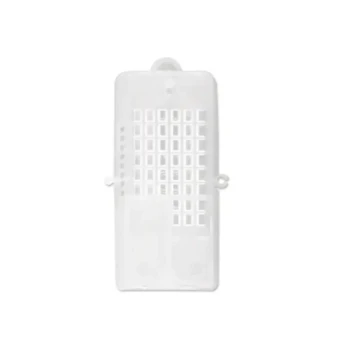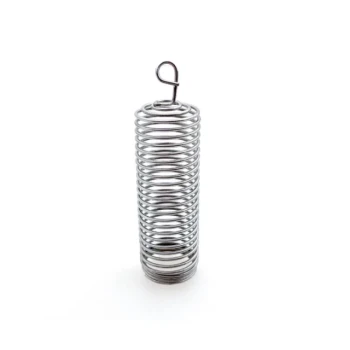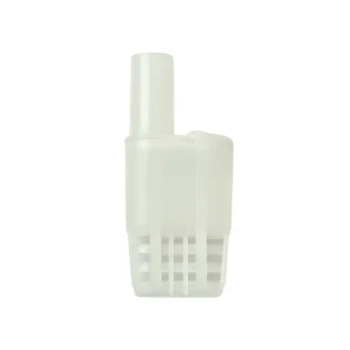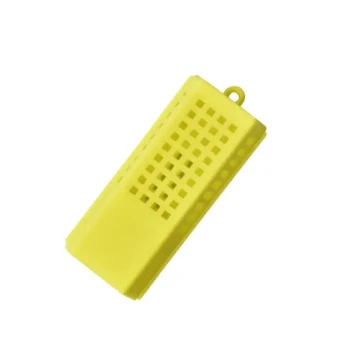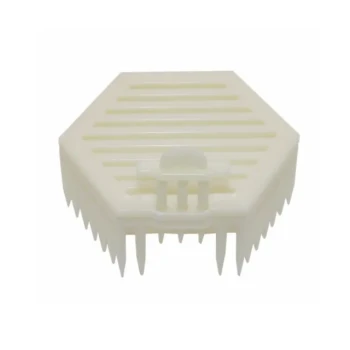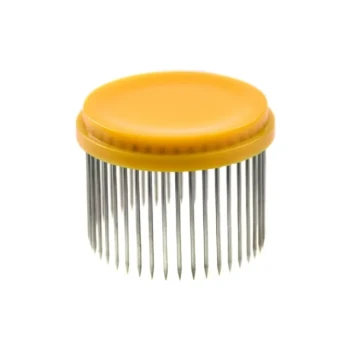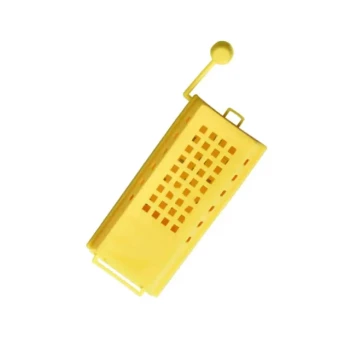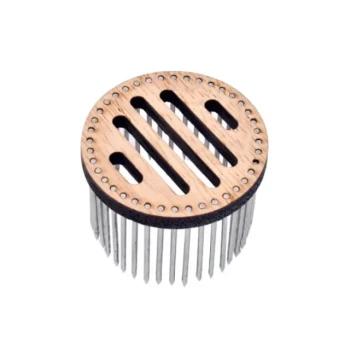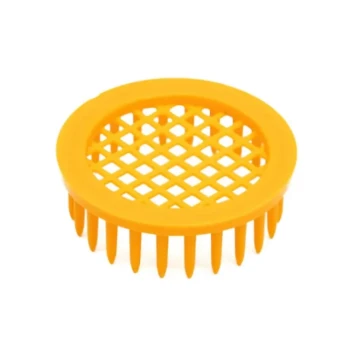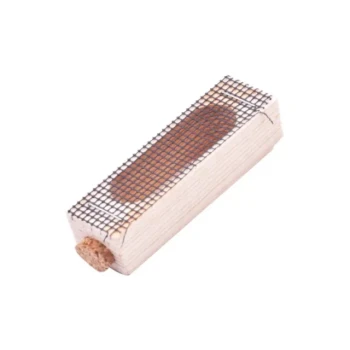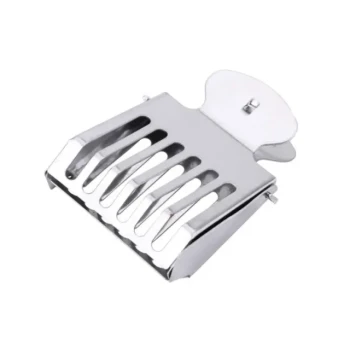At its core, a queen cage is a tool for safe introductions. It is a small, protective enclosure used to transport a new queen bee and introduce her to a foreign colony without her being immediately attacked and killed. The cage's design, typically mesh or plastic slats, allows the worker bees to slowly acclimate to her unique scent (pheromones) over several days, ensuring a peaceful and successful transition of power.
The fundamental challenge of introducing a queen is overcoming a colony's instinct to kill a stranger. A queen cage solves this by managing the hive's social chemistry, using time and proximity to turn a foreign queen into the accepted mother of the colony.
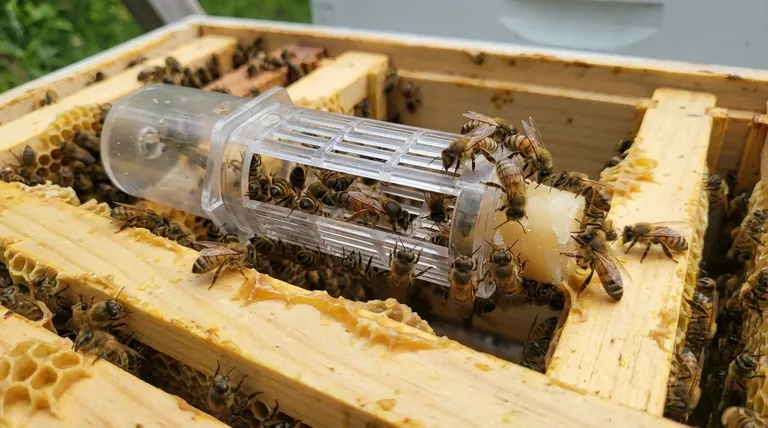
The Core Problem: Why Colonies Reject Queens
To understand the function of a queen cage, you must first understand the brutal social dynamics of a honey bee colony.
The Role of Pheromones and Scent
Every beehive has a unique identity, a "scent signature" that is dictated primarily by the resident queen. She constantly emits powerful chemicals called pheromones, which circulate throughout the colony as bees interact, letting every member know that a healthy, laying queen is present.
The "Foreigner" Response
Any bee that does not carry the hive's specific scent is treated as a threat. When a new queen is suddenly dropped into a colony, the worker bees perceive her as a dangerous usurper. Their defensive instinct is to surround her in a tight ball, vibrate their wing muscles to generate intense heat, and cook her to death—a behavior known as "balling."
How a Queen Cage Manages the Introduction
A queen cage is engineered to bypass this defensive instinct and foster acceptance through a controlled, multi-day process.
Step 1: Physical Protection
The most immediate purpose of the cage is to provide a physical barrier. It prevents the worker bees from being able to directly attack and ball the new queen upon her arrival, giving the introduction process time to begin.
Step 2: Pheromone Dispersal
The openings in the cage are large enough for antennae to pass through and for air to circulate freely. This allows the new queen's pheromones to slowly spread throughout the hive. Over several days, her scent begins to mingle with and eventually replace the old scent, or fill the void if the colony was queenless.
Step 3: Gradual Acceptance and Release
Most queen cages have a small hole plugged with a sugar candy-like substance. The worker bees from the colony begin to eat through this candy plug from the outside. By the time they chew through it—typically 3 to 5 days later—they have fully acclimated to her scent. When she walks out, she is no longer viewed as a foreigner but as their new queen.
Key Scenarios for Using a Queen Cage
Beekeepers rely on queen cages in several critical situations to ensure the health and productivity of their apiary.
Requeening an Existing Colony
If a queen is old, producing poorly, or has undesirable genetic traits (like aggression), beekeepers will replace her. The new, genetically superior queen is introduced using a cage.
Installing a New Bee Package
When you buy a package of bees, it arrives as a box of several thousand worker bees with a new queen suspended inside in her own cage. The entire package is installed in a new hive, and the queen cage is placed between frames for the colony to release her.
Creating a Hive Split
To expand an apiary, a beekeeper might split one strong colony into two. The half that is moved to a new location is left queenless and is given a new, caged queen to establish itself as a separate hive.
Temporarily Isolating a Queen
During a hive inspection, a beekeeper might use a specific type of cage called a "queen clip" to gently secure the queen. This prevents her from being accidentally rolled or crushed while the beekeeper is moving frames.
Understanding the Trade-offs and Pitfalls
While highly effective, using a queen cage requires an understanding of bee behavior to avoid common mistakes.
The Risk of Premature Release
Do not manually release the queen from the cage too early. If you open the cage after only a day because you believe the bees "look calm," you risk triggering their latent defensive instincts. Always trust the candy plug process and give the hive several days to acclimate.
Ensuring the Hive is Truly Queenless
A colony will never accept a new queen if it already has one. Before introducing a new caged queen, you must be absolutely certain the old queen is gone. If the hive has a hidden virgin queen you missed, she will hunt down and kill your newly introduced queen upon her release. It is best practice to wait 24 hours after removing an old queen before introducing the new one.
Distinguishing from Other Queen Management Tools
A queen cage should not be confused with a queen excluder.
- A queen cage is a small box for introducing a queen.
- A queen excluder is a large screen that separates hive boxes to contain a queen and control where she lays eggs.
Making the Right Choice for Your Hive
Base your use of a queen cage on your specific beekeeping goal.
- If you are installing a new package: Trust the process; place the queen cage between two frames and allow the bees to release her naturally via the candy plug over 3-5 days.
- If you are requeening a hive: Remove the old queen, wait 24 hours to ensure the colony recognizes its queenlessness, and then install the new caged queen.
- If you are splitting a hive: Introduce the new caged queen into the queenless half of the split, giving them a clear and direct path to becoming a productive colony.
- If you are performing an inspection: Use a queen clip or cage to temporarily secure the queen if you are worried about losing or injuring her during complex frame manipulations.
Ultimately, the queen cage is your most reliable instrument for managing the single most important asset in your colony: the queen herself.
Summary Table:
| Purpose | Key Function | Common Scenario |
|---|---|---|
| Safe Introduction | Protects the new queen from attack, allowing worker bees to acclimate to her scent. | Requeening an existing colony or installing a new bee package. |
| Pheromone Management | Allows the queen's scent to disperse slowly, ensuring she is accepted as the hive's new mother. | Introducing a queen to a queenless hive or a hive split. |
| Controlled Release | Worker bees eat through a candy plug over 3-5 days, releasing the queen only after acceptance. | Standard procedure for all new queen introductions to prevent premature release. |
| Temporary Isolation | Secures the queen during hive inspections to prevent accidental injury. | Using a queen clip during frame manipulations. |
Ensure the health and productivity of your apiary with the right equipment from HONESTBEE.
We supply durable, effective queen cages and a full range of beekeeping supplies designed for the demands of commercial apiaries and beekeeping equipment distributors. Our wholesale-focused operations ensure you get the reliable tools you need for successful queen management and hive growth.
Contact our team today to discuss your wholesale needs and keep your colonies thriving.
Visual Guide
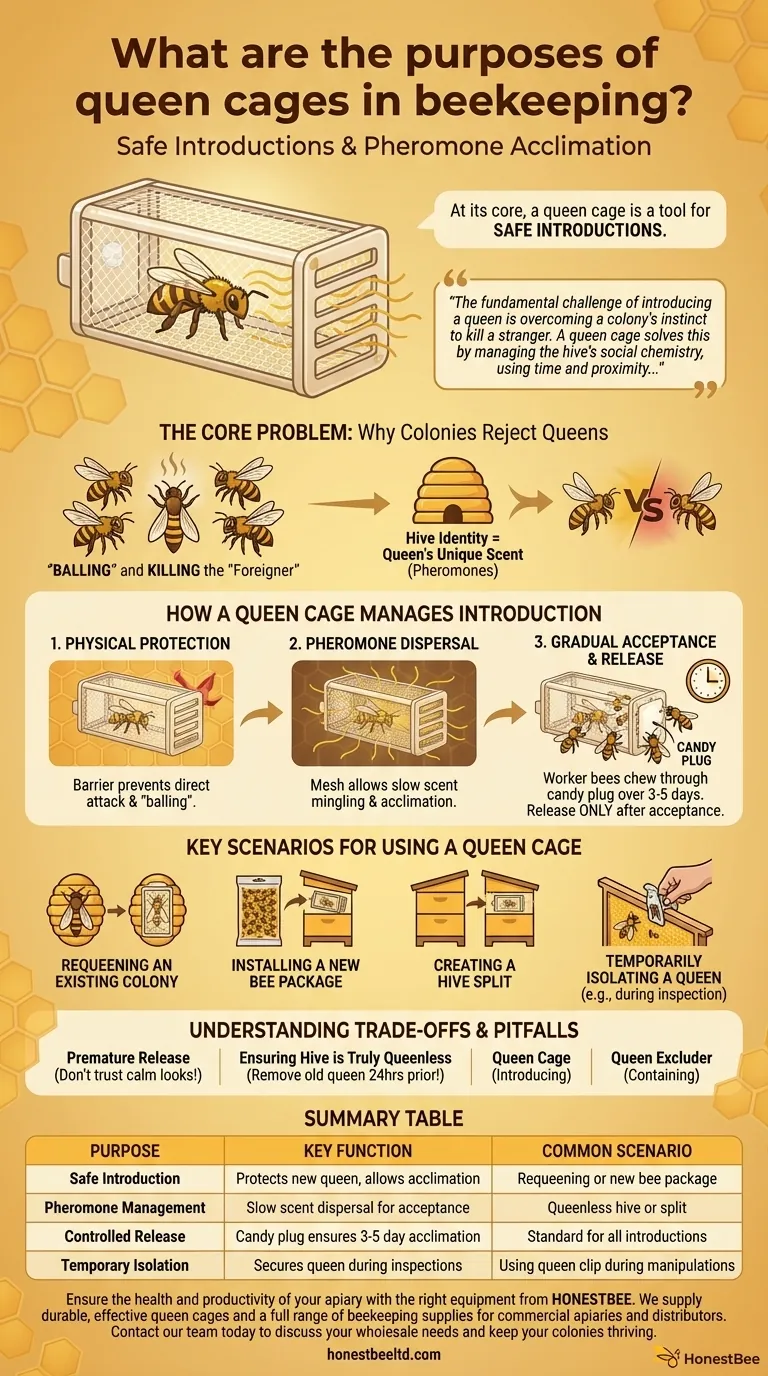
Related Products
- Professional Multi-Functional Queen Bee Cage
- Durable Galvanized Steel Spring Queen Bee Cage
- Multi-Function Queen Roller Cage and Catcher
- Wood and Mesh Push-In Queen Cage
- Professional Multi-Compartment Queen Cage with Sliding Lid
People Also Ask
- What should be done before removing the queen cage from the hive? Ensure Your New Queen is Accepted & Laying
- How long does it typically take bees to adjust to a new queen? Master the 2-7 Day Acceptance Window
- Why might bees reject a new queen? A Guide to Successful Queen Introduction
- How do you check if the queen has been released after installation? A Guide to Successful Queen Acceptance
- What are common mistakes to avoid when using queen cages? Ensure Successful Queen Introduction
